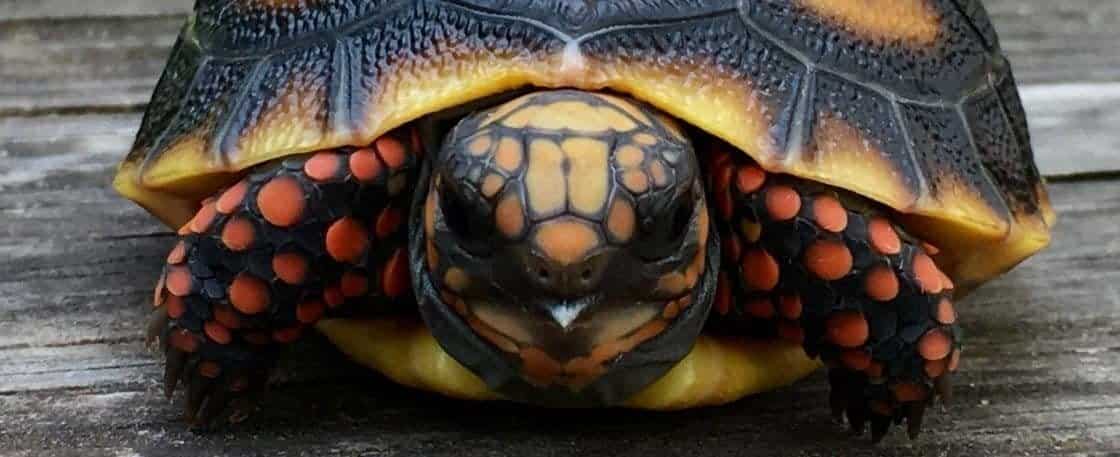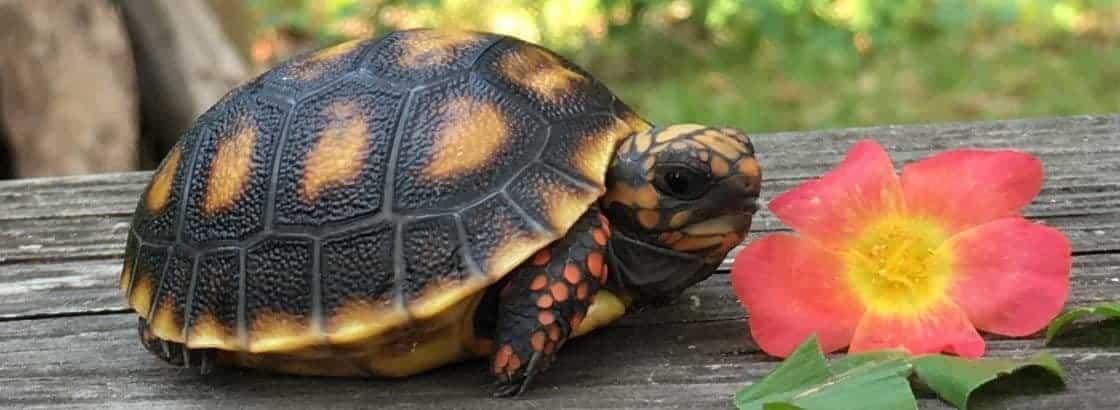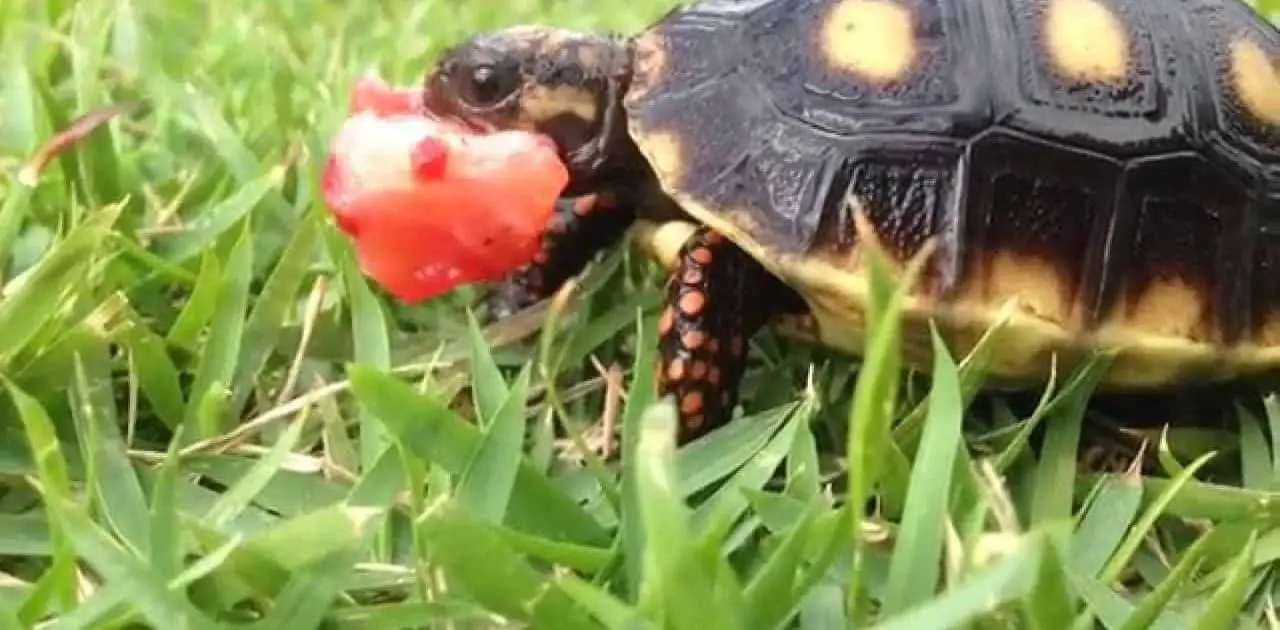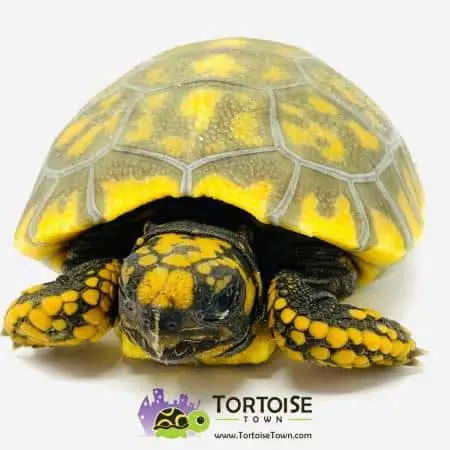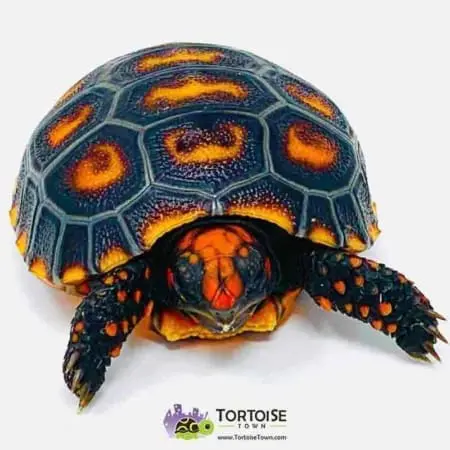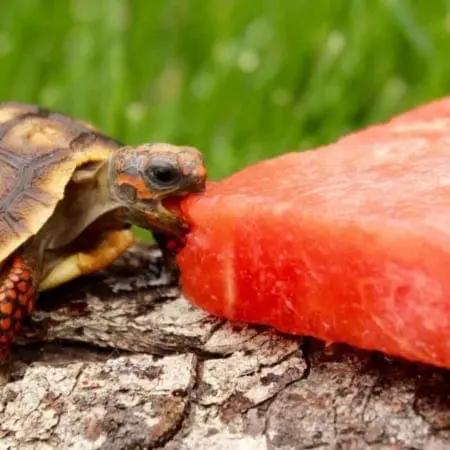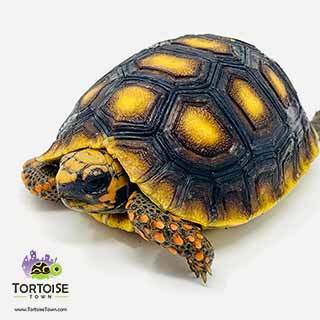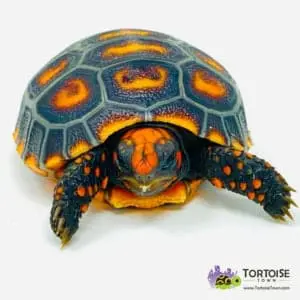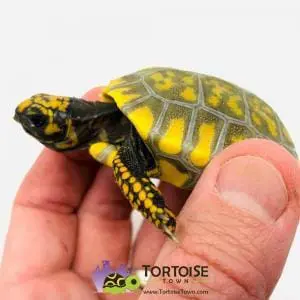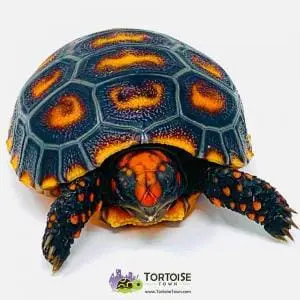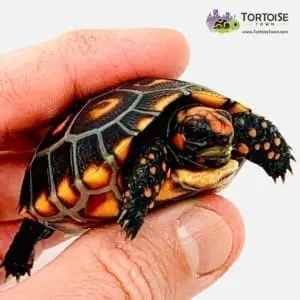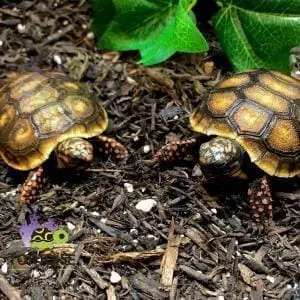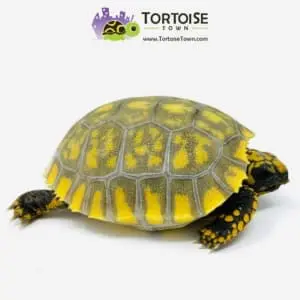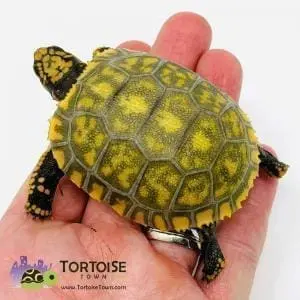Red footed tortoise water
Water is a key element in all forms of life, and tortoises are no different. Red footed tortoises for sale, along with yellow foot tortoise and the Cherry head tortoise all are tropical, forest species of tortoise. Forest species not only consume more water, but also need a much more humid environment to live in. Part of the reason red foots need more water and humidity is their diet, consisting of a higher protein content than most. Red footed tortoises are known for eating even small animals, carrion, eggs. For this reason, additional water is needed for the tortoise to properly process protein.
Soaking your baby Red footed tortoise
Baby red foot tortoises should be soaked daily. Each morning, for 8-12 minutes, soak your baby red footed tortoise in shallow, 82 degree warm water. If the tortoise poops in the water, you can remove the tortoise for that days’ soak. A rule of thumb at our tortoise farm, is once an animal poops, or 10 minutes have past, soaking is over. It is with this rule we do our daily soaks for all of our baby tortoises. Soaking your tortoise daily also allows them to clean themselves, wipe dirt off their eyes, and face, and clean their plastron as well. Using a terra cotta dish works well. Red foot tortoise hatchlings do not require a water dish in their habitat so long as you are soaking them daily.
Learn proper red footed tortoise care with our red foot tortoise care sheets. Tortoise town offers a full section specifically on red footed tortoise care. This includes Cherry head tortoise care, as well as yellow footed tortoise care sheets. Our care guide will touch on all the important aspects of properly caring for a baby, or adult red foot tortoise, yellow foot tortoise for sale, or cherry head tortoise for sale. Take the time to review all of the free information our biologist has put together into our fantastic care sections. Tortoise town has one of the most extensive tortoise care sheet sections of any tortoise breeders in the world.
Find detailed information on the following Red foot, cherry head and yellow foot tortoise care needs:
- Red footed tortoise diet
- Red foot tortoise care
- baby Red footed tortoise water
- Adult red foot tortoise habitat
- Red footed tortoise size
- baby red foot tortoise humidity
- red foot tortoise temperature
- baby red footed tortoise substrate
- Red foot tortoise lifespan
- baby Red footed tortoise
- red foot tortoise for sale
- yellow foot tortoise
- cherry head tortoise
Red footed tortoise Diet
Unlike nearly all species of tortoise, Red-Footed tortoises are actually omnivorous. This includes cherry head tortoises as well as yellow footed tortoises. Forest tropical species like the red foot prefer fruits, greens and vegetables to grasses and weeds. Red foots even search for high protein food such as worms and rodents. Carrion is also consumed by forest species, which is another reason they consume more water than desert species. We recommend that you DO NOT feed iceberg lettuce or any other head lettuces as they contain very little vitamin and minerals. Mazuri tortoise chow should be soaked, softened and added to the tortoise salad every other day. By using Mazuri you are supplementing additional protein as well as vitamins, minerals including Vitamin D3. Please remember variety is very important to keep your animal healthy, you should aim to provide a diet of around 70% fruit, 25% greens, 5% protein based diet. Here is a list of recommended supermarket obtainable products to feed your tortoise.
Fruits for the red footed tortoise:
- Strawberries are a favorite
- Blueberries
- Sliced Mangos
- Blackberries
- Honeydew, Water melon and other green melon like cantaloupe
- Papaya is great!
- Bananas sparingly
- Tomatoes occasionally
Greens/Vegetables for the red footed tortoise:
- Romaine Lettuce
- Kale
- Escarole
- Turnip Greens
- Collard Greens
- Mustard Greens
- Radicchio
- Squashes
- Zucchini
- Pumpkin
- Carrot
It is very important that you supplement the diet of your new red foot tortoise for sale with calcium supplements such as Calcium powder with Vitamins for Herbivores.. You can simply sprinkle this over the top of the food you provide your tortoise. This is very beneficial to all reptiles and prevents any horrific problems occurring such as metabolic bone disease.
Red footed tortoise habitat
Like most species of Pat Torres, when selecting what type of habitat you were going to prepare for your baby red footed tortoise, keep in mind the size the animal will be once fully mature. Another option,Is using multiple different habitats during different stages of life. This also works well, and perhaps even better at maintaining the variables necessary to support life at optimal function.
For example, since humidity is such a concern for this species, the smaller the area, the easier will be to maintain that 70% ambient humidity that you require. At the same time, smaller enclosures will offer you less of a possibility of having different temperature gradients. This is because they are small. The larger the enclosure, typically the larger the temperature gradient you can provide. For example, using something as simple as an aquarium work well so long as you close off the side. Basically, it is common thought thru red footed tortoise breeders, that you should not allow your tortoise to see through the walls.. You see, tortoises do not understand the barrier and will consistently be trying to escape through the clear wall. This intern stresses the animal which is not good for anything.
Other options include using a tortoise table or even a tortoise house. The issue with using these, and you will need to do something to supplement the dryer air the larger percentage of air exchange or airflow. Which thereby decreases the ambient humidity. Humidity again, is key when raising a baby red footed or cherry head tortoise for sale. Humidity not only provides the animal the ample hydration it requires but alsoAllows them to grow in such a way that they do not experience any peer amid shaped on their shell as they grow.
Red footed tortoise size
Medium sized tortoises, the red footed tortoise grows between 10 and 16 inches long. Most hit around 12-14″ at full maturity. Males and females are reasonably the same size with males having a concave plastron. Yellow footed tortoises are known for getting slightly larger, in the range of 13-17″ overall. Cherry heads are the smallest of the red foot tortoise family, growing 9-12″ on average, with males being slightly smaller than females. There is however, exceptions where the males are larger than the females, however it is not common.
Red footed tortoise UVB Lighting
UVB lighting should always be provided typically by using a fluorescent lamp. We highly recommend using a T5 high output to style lamp instead of a screw in compact fluorescent style. When choosing a lamp for your baby red footed tortoise, keep in mind that they are far species.Our species typically use five or 6% UVB. We offer both here at our tortoise farm. It is recommended that you also provide plenty of shade and hunting areas so that your tortoise can escape the ultraviolet light gradients.
Provide ultraviolet light on a timerFrom anywhere between 8 to 12 hours per day. Somewhere in the neighborhood of 10 hours is sufficient and is most commonly used.Having your lighting system on a timer allows the animal to have a normal day night cycle which is essential for daily life. Using a 5% lamp is perfect for a baby or adult red footed tortoise beings they are forrest species. Forest species also include the yellow footed tortoise, cherry head tortoise and even the Burmese mountain tortoise. Forest species typically spend a lot of time under tree shade, so using a less intense UVB lamp is recommended for this reason. Red Foot Tortoise Care & Information Sheet: Before you buy your new red foot tortoise for sale, please review the red foot tortoise care sheet below.
What does a Red-Footed Tortoise look like?
Red-Footed tortoises are medium in size averaging (12-16 inches) in length. Red-Footed tortoises have a loaf shaped carapace which is quite variable in color depending on which region they are from; as a rule they have a dark overall appearance but with lighter patching in the middle of each scute. Some specimens have intense red scales to a pale yellow on their legs and head. Males are the larger of the two sexes with a concave plastron; they also have a narrower mid-section giving them the appearance of a waist.
These tortoises are very closely related to the Yellow-Footed Tortoise from the Amazon basin region.
Where is the red foot tortoise from?
These tortoises are normally found in Northern South America. Their natural habitats can be anything from grasslands, to the forest-edges around the amazon basin. They are also found within tropical rainforests of South America. There are known populations found on some of the Carribean islands. We only sell captive bred healthy red footed tortoise for sale.
Buying your baby red foot tortoise for sale from a reputable red footed tortoise breeder is key to having your pet red foot tortoise living a long, healthy life.
- Display 12 Products per page

